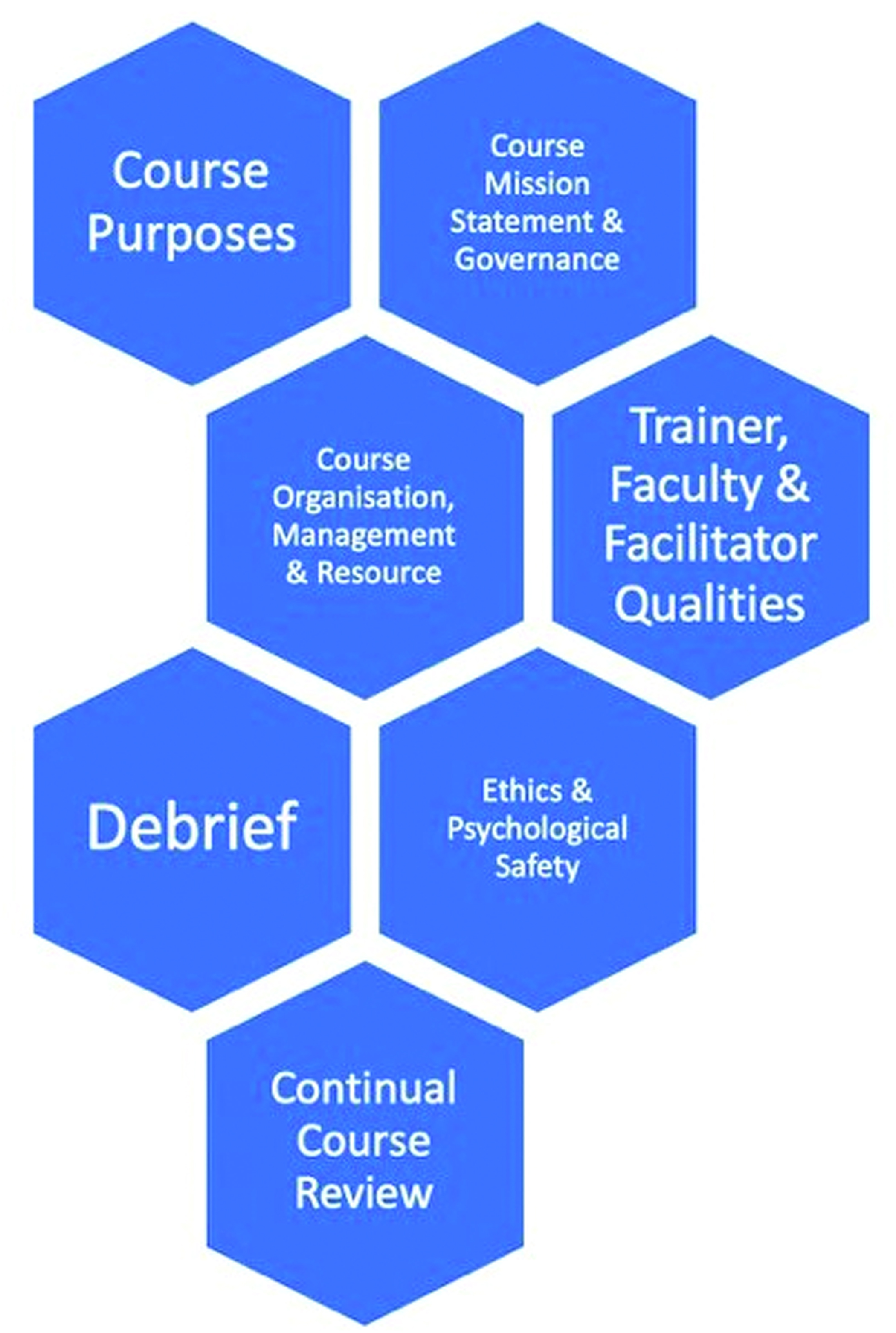
The Clinical Education department at UHB has been running high fidelity simulation courses for undergraduates and postgraduates across three hospital sites for several years. Feedback from faculty and candidates has led to enhancement of all courses, yet a deliberate method of Quality Assurance (QA) was deemed requisite for educational governance, standardization and to attain accreditation with ASPiH.
Drawing on ASPiH Standards [1], the departmental leads for simulation designed a framework with seven domains (Figure 1-A76) for this QA project with a view to also appraise novel simulation courses within the Trust. To minimize bias, details of how the domains were assessed, collection and analysis of data and generation of recommendations were performed by two Simulation Fellows who were new to the department, with no previous experience of attending or facilitating any of the courses.


Five undergraduate and four postgraduate courses were evaluated. Seven courses met or exceeded departmental standards in all seven domains, whilst the other two courses met or exceeded standards in six of the seven domains.
All courses had robust purposes, organization and resources at their disposal, which exceeded departmental expectations with their consistent focus on how human factors affect patient safety, and sound adherence to the relevant curricula and learning objectives. Scenario designs also incorporated a range of human and technological resources and moulage.
Despite an array of technology at the Trust’s disposal, its functioning did not always meet the departmental standards, with recurring audio difficulties and occasional software tethering issues. In response, microphone positions were changed, and the department’s Digital Innovation team consulted specialists to facilitate further improvements.
In the courses observed, debriefs were conducted in a holistic manner and candidate evaluation was always discussed. However, many courses lacked enough faculty members resulting in Objective Structured Assessments of Debriefing (OSADs) being performed infrequently. Swift changes were made, with a tightening of procedural behaviours within the courses, and a decision was taken for postgraduate courses to run with a minimum of four faculty members.
This comprehensive QA process demonstrated that high-fidelity simulation courses at UHB are predominantly being delivered at a good standard. Some recommended changes have already been implemented for aspects found to be substandard, with implementation of additional changes planned at annual course reviews. Annual QA must then take place to guarantee maintenance of high standards and to provide a solid foundation for appraising novel simulation courses throughout the Trust.
Authors confirm that all relevant ethical standards for research conduct and dissemination have been met. The submitting author confirms that relevant ethical approval was granted, if applicable.
1. Association for Simulation Practice in Healthcare. SIMULATION-BASED EDUCATION IN HEALTHCARE – STANDARDS FRAMEWORK AND GUIDANCE [Internet]. 2016 [Cited 2023 Apr 28]. Available from: https://aspih.org.uk/wp-content/uploads/2017/07/standards-framework.pdf